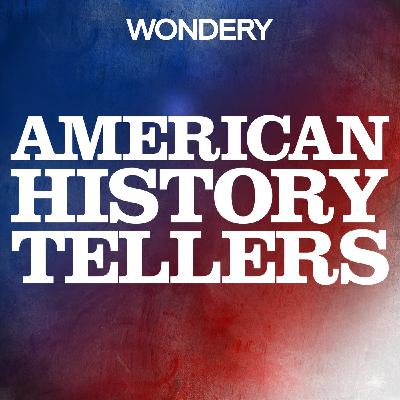When a German U-boat torpedoed the RMS Lusitania on Friday, May 7th, 1915, Americans found two new enemies: Germany and the beer it was so associated with. Anti-German sentiment grew, and with it hostility to the breweries founded in the 19th century by German immigrants. Soon, the war effort and the temperance movement were linked: it was patriotic to abstain, and Prohibition became law.How did America cope? They swapped their stool at the bar for a seat at the soda shop, listening to new radios and the first ever baseball broadcasts. But Americans’ thirst wasn’t ever fully quenched: they turned to family doctors who prescribed “medicinal alcohol,” and then finally to the bootleggers, moonshiners and rum-runners who made, smuggled and sold hooch of all types, from top-shelf French cognac to homemade swill that might just kill you.For more about the Lusitania, check out Dead Wake: The Crossing of the Lusitania by Erik Larson.Daniel Okrent’s Last Call: The Rise and Fall of Prohibition has more information on medicinal alcohol and how it was prescribed by doctors. To learn more about medicinal beer, this article by Beverly Gage for The Smithsonian is excellent.The 1991 study “Alcohol Consumption During Prohibition” by Jeffrey A. Miron and Jeffrey Zwiebel, is considered the definitive study about how much people actually drank during the noble experiment. For more information on how Prohibition played out in the early days, check out Professor David J. Hanson’s, “Alcohol Problems and Solutions,” a comprehensive, interactive site that outlines all the various stakeholders in the Noble Experiment.To read more about Americans behaving badly in Cuba and other places during Prohibition, check out Wayne Curtis’s And A Bootle of Rum: A History of the World in Ten Cocktails, as well as Matthew Rowley’s Lost Recipes of Prohibition. And, to learn more about rum-runners, Daniel Francis’s book, Closing Time: Prohibition, Rum-Runners and Border Wars is an excellent reference.Further references can be found in America Walks Into a Bar: A Spirited History of Taverns and Saloons, Speakeasies and Grog Shops by Christine Sismondo.Support this show by supporting our sponsors!See Privacy Policy at https://art19.com/privacy and California Privacy Notice at https://art19.com/privacy#do-not-sell-my-info.












📢 ALL EYES ON IRAN. The Iranian regime has shut down the internet and cut landlines nationwide. Millions are in the streets, bravely resisting across the country. Be the voice for the Iranian people when their voices are being silenced. 🔆📢
pee-nins-you-luh!? Really? dude learn how to talk!!
alcohol sucks...
Very interesting, exciting story.
.9
You want to make this about class and privilege when at least five people died because of her and many others were made seriously ill? Because one woman didn't like her options and insisted on being a science denier? Yes, her options and available tools sucked. Yes, she was in tough circumstances. But she can't have stayed ignorant. After the initial outbreak, she knew she was a carrier. She lied and went back to cooking--in a hospital--and didn't tell others of her condition. What about them?
your opt out page is a scam. Doesn't comply with California law. l would like to opt out but after repeated attempts I am told I'm a robot. F.U.
sounds like ai voice and white noise after each word. Not good. Should be an interesting topic.
64 years of reign!
dDoesn't play a single second of this episode.
Another episode that is cut short. It says it's 46 minutes, but cut at 17 right in the middle. This is frustrating since chunks of the history is missing.
It says the episode is 45 minutes but it only plays for 3.
Sweet editing job 🤦🏻♂️
great podcast...thanks
If you get to Northern UTAH, you need to visit the Golden Spike museum.
One of the fewist people in human history where the more you learn of them the more you love and admire.
I like cheese
Absolutely the biggest joke ever played on the United States, a racist "president" and his first "lady" big Mike!! And the clown show continues with Obummer going for his 5th run as president of this country. We've had enough of Barry, Mike, ol Joe, Killary, the drunk Nut job Nancy and ALL demonrats, anymore of those things in the WH and this country is definitely going to burn to the ground!! NO MORE!!!
Absolutely laughable that the most divisive President in modern history ever wanted unity.
I absolutely love 'American History Tellers'! The way the show delves into historical events with such depth and engaging storytelling is truly remarkable. The host’s ability to bring history to life, making it both informative and captivating, is second to none. Each episode feels like a journey through time, and the thorough research behind every topic shines through. https://www.iheart.com/podcast/269-pizza-packaging-solution-200324496/